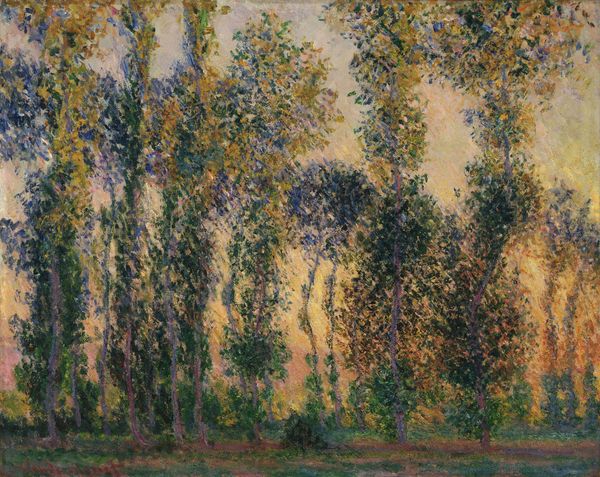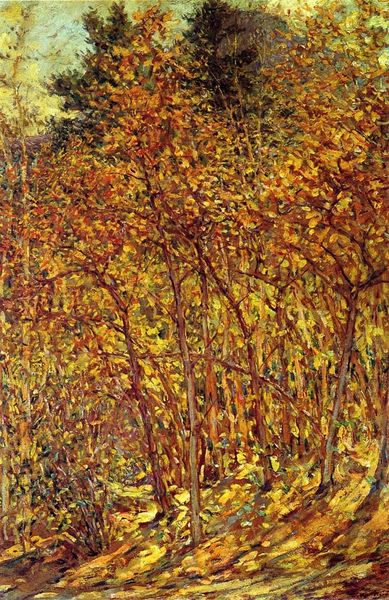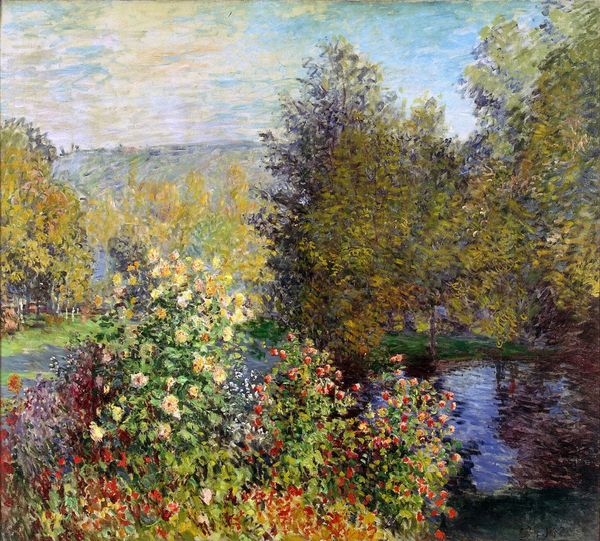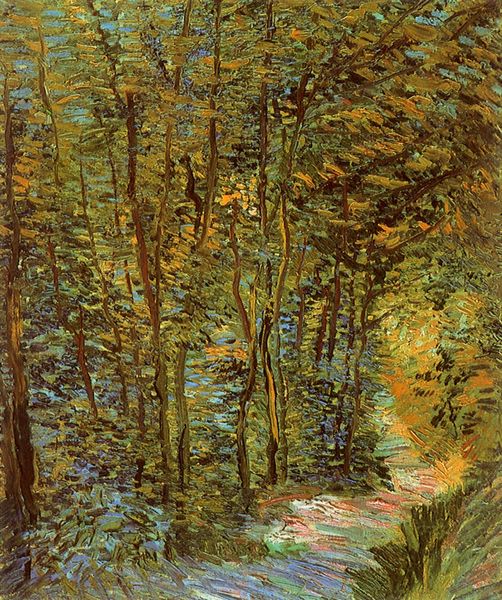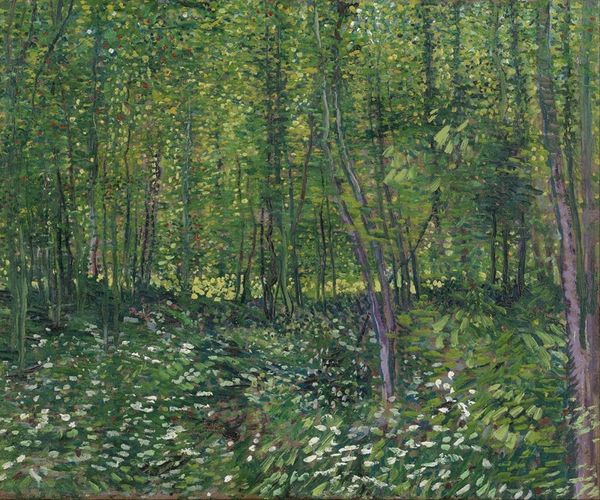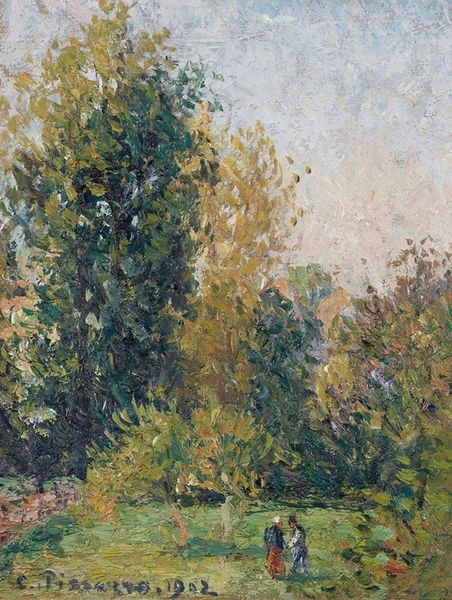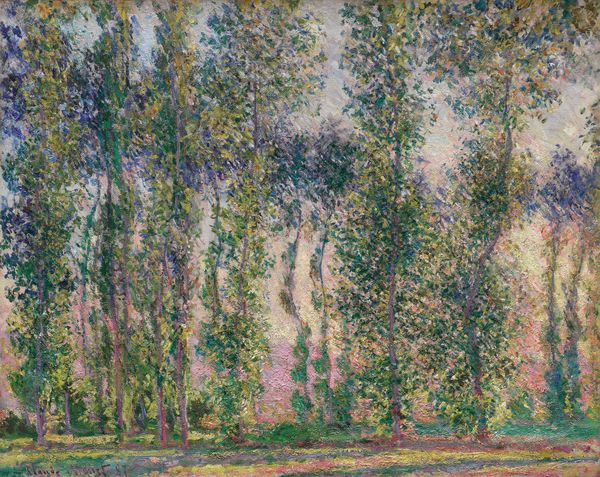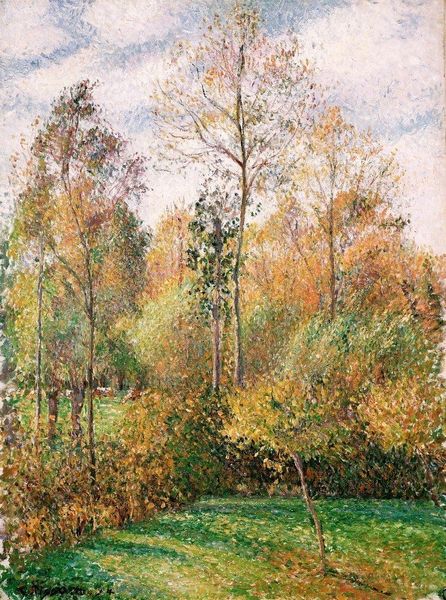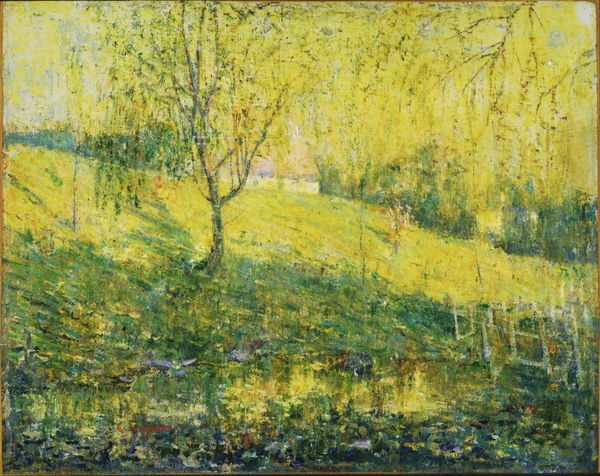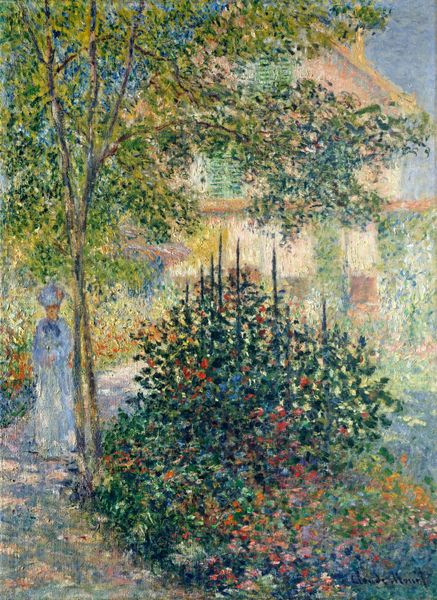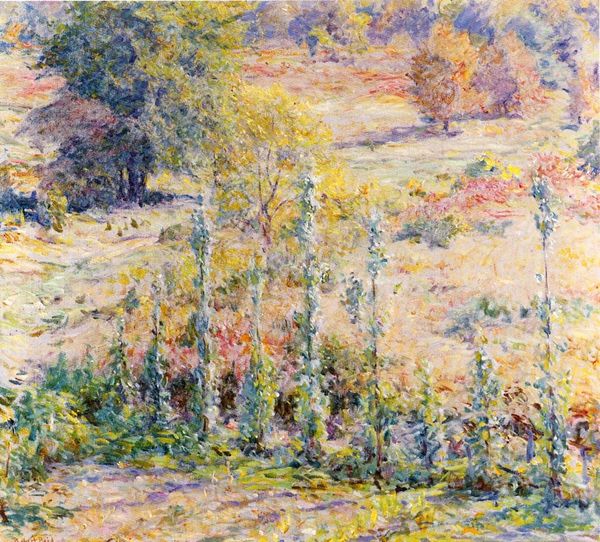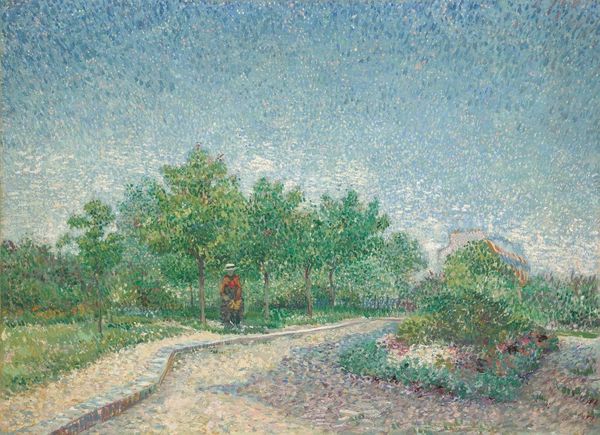
Copyright: Public domain
Curator: What a beautiful explosion of texture and color! It's almost overwhelming at first glance. Editor: Indeed. Today we're looking at Claude Monet’s "The Garden," painted in 1876. It's a quintessential example of his Impressionist approach to capturing the transient effects of light and atmosphere in everyday settings. Monet was, after all, deeply involved with redefining academic landscape traditions through open air and contemporary subject matter. Curator: The impasto is incredible. You can almost feel the roughness of the bark, the delicate flutter of the leaves. The way he layers the paint, it's less about representation and more about the sensation of being in a garden. It makes me think of the early debates surrounding Impressionism, and whether its optical approach to perception, recording light’s reflections and distortions of nature, served a social purpose. Editor: And that "sensation," as you say, was critical for the Impressionists' social standing as "modern artists," because their ability to paint sensation elevated mere landscape painting to high art. But let's talk about the perspective here. Monet blurs the line between foreground and background with the intense vegetation, practically engulfing the solitary figure in the lower left corner. Curator: Yes! The figure seems almost incidental, dwarfed by the sheer exuberance of nature. Could we read that, perhaps, as a commentary on the place of humanity within the rapidly industrializing landscape? The garden offering an escape from urban life? Editor: An escape, perhaps, or simply a re-centering. Remember, this was painted in the midst of significant urban development in Paris. The Impressionists were invested in the aesthetics of modern life. Monet's brushstrokes create an effect of immediacy, as if capturing a fleeting moment in time—a testament to his belief in painting "en plein air". Curator: Thinking about that idea of the "fleeting moment" and Impressionism, I think Monet also comments here on how bourgeois leisure begins to dictate perception, literally shaping how they will be viewing the world! So is this ‘momentariness’ just a bourgeois construct of freedom? Editor: It's a tension certainly, an image built on visual pleasure also commenting on those terms of perception themselves. I always find his choice of color fascinating. Curator: Well, whatever Monet intended, its lushness still speaks volumes about our relationship with nature. It encourages us to consider our place within it. Editor: I concur; ultimately it stands as an object lesson in how an artist transforms paint into the visual equivalents of light, atmosphere, and, dare I say, even emotion.
Comments
No comments
Be the first to comment and join the conversation on the ultimate creative platform.
